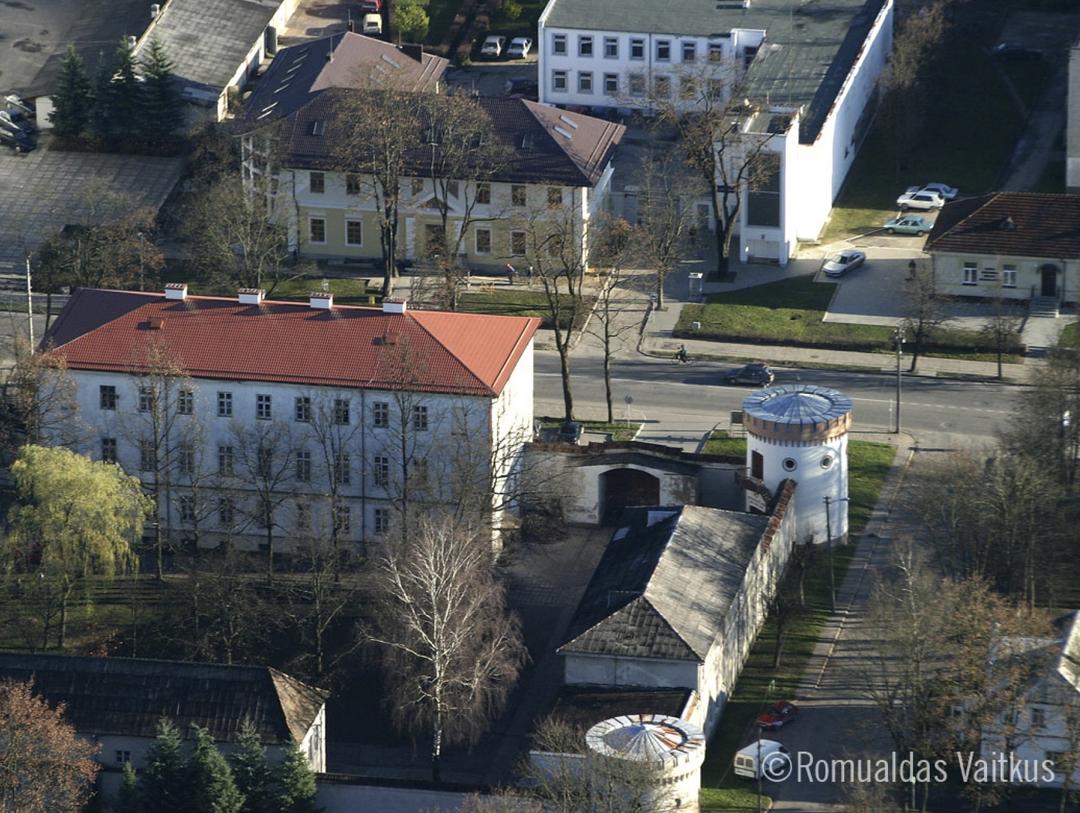Marks of Cultural Heritage and History in Tauragė

Historical resources mention Tauragė for the first time in 1507. During the course of history, the geographic location of the border city was quite an advantage, especially in terms of trade, but the city and its surroundings also used to suffer more than other places during the war. In order to show the noble historical past of Tauragė and the cultural values that have survived to this day, we offer you a route of the Marks of Cultural Heritage and History in Tauragė. Take a walk and visit 10 objects.
Begin the acquaintance with historical buildings at the beginning of Tilžės Street, featuring an important object of the city’s development – the Motor Mill of Hiršas Gitkinas, built on the Jūra River shore in 1922. Currently, the building houses a private company and tours inside are possible only upon making arrangements with the owners. After crossing the bridge of the Jūra River, walk on Dariaus ir Girėno Street towards the city centre. Explore the complex of the postal station buildings, built in the second half of the 19th c. The front façade features a memorial board, stating that on 10 October 1843 this building hosted the famous French writer Honoré de Balzac. On the nearby building of Tauragė Birutė Baltrušaitytė Public Library, located nearby on Respublikos Street, there is an information memorial board, stating that: “The initiative group of the Reform Movement in Tauragė was established and operated in this building in 1988.” Then continue your journey back to Dariaus ir Girėno Street, where there is the main symbol of Tauragė city – a building complex, referred to as the fortress. Although the buildings do indeed have certain characteristics, attributable to a fortress, this was never a defence object. It is a 19th c. complex, built in stages for the customs service.
Continue our acquaintance with architectural monuments exploring the representational building – the Bank – built on the intersection of Dariaus ir Girėno and Vytauto streets in 1935. At the end of Bažnyčių Street, which divides the city centre, there is the church of the largest evangelical Lutheran parish in Lithuania – Martynas Mažvydas Church of Tauragė Parish. Exploring this sanctuary, take a moment to look at the niches of the façade, decorated with brass statues of Martin Luther and Martynas Mažvydas. When you pass the park of Jonas Viktoras Kalvanas, turn into Prezidento Street. There you will find a special historical monument – the House of the Suffering of the Exiles and Political Prisoners of Tauragė Regional Museum, featuring a unique exposition. During the Soviet era this building was the headquarters of Taurage District Security Police (NKVD, MGB). Now the building is referred to as Šubertinė, based on the last name of the previous owner of the house, who was a German. In the yard you can visit a memorial for the Lithuanian Freedom Fighters, built in memory of the post-war martyrs.
Then, walk on Prezidento Street towards the Church Square. Nearby the square, on a high slope of the Jūra River, there stands the St Trinity Roman Catholic Church. The history of this building is written on a board at the side entrance. Take note of the monuments, standing in the church yard. Also, explore the defensive object, located not far from the church – the pillbox of the Molotov Line.
The last object of the route, which is also the furthest from the city centre, is the decorative building of Tauragė Railway Station, built in 1927. Unfortunately, both the station and its platform are full of painful historical pages of Tauragė region. Words, carved on the memorial board, hanging on the wall of the building remind that: “On 14/06/1941 and in 1945-1953, from this railway station Lithuanian residents were exiled to the depths of the Soviet Union.”
By taking this route, you will walk about 3.8 km and it will take about 2 h.